We all know how important our car wheels are, right? It’s equally important that we perform necessary checks on our car wheel bearings. Neglecting these, may not only compromise the integrity of our motor vehicles but serve as safety hazards too. I have often heard the phrase, “Driving with a bad wheel bearing is a bad idea’, so let’s unearth this topic for better understanding. This blog intends to define the bearings and their significance, the risks associated with driving with a bad wheel bearing, and warning signs pertaining to a failing bearing. Lastly, we are all aware of how costly repairs can get while also being a hassle in our busy lives. After reading this guide, I’m pretty sure you’d be well-informed about the subject.
What are the signs of a bad wheel bearing?
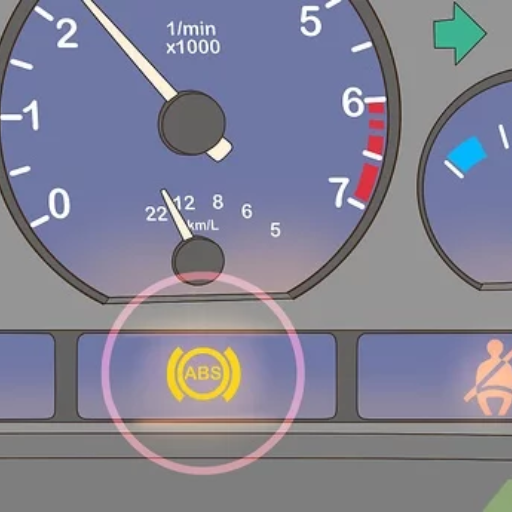
There are telltale signs of a failing wheel bearing, which include unusual sounds such as humming, grinding, or growling of the wheels. There may be some imperfections in other parts, like the steering wheel. You may have an excessive vibration or uneven tire wear. You may also feel a wobbling sensation when driving. In some cases, the vehicle may not feel as responsive if the direction is changed. Addressing these symptoms to avoid any road accidents.
Unusual noises: grinding, humming, or whining
I can tell you that unusual noises such as grinding, humming, or whining are often a clear indicator of a failing wheel bearing. These sounds occur because the bearings are no longer operating smoothly and may be experiencing a lack of lubrication or structural damage. Ignoring these noises can lead to further wear and tear, compromising your vehicle’s performance and, more importantly, your safety. If you notice these sounds, it’s essential to have your vehicle inspected and repaired by a trusted technician as soon as possible.
Steering wheel vibrations and wobbling
So I can share my memories regarding the wobbling and vibrations of the steering wheel. These are quite frequent phenomena and can be considered a problem with the various components of your car, and they should be fixed as soon as possible. In order to get insight into what could be going wrong, however, here are certain key parameters that I always look into while diagnosing the problem at hand:
- Tire Balance and Condition – The primary cause of vibrations in cars, in most cases, comes from unevenly worn tires and out-of-balance wheels. They can be more prominent at certain speeds, so it is vital to examine your tires for wear and balance.
- Suspension and Alignment -Wobbling, in some cases, is caused by worn-out or broken components like ball joints or control arms, which make up the suspension system. Poor wheel alignment is also one of the drivers for such wobbles, any form of uneven handling can stir these symptoms along with distorted steering grip.
- Brake System Issues – If the brake rotator becomes warped or there are any issues with the calipers, then commonly experienced shaking while applying brakes can occur. This brake wobble primarily functions when you’re driving to help in rotating the wheels and thus is likely to be the stimulator of the shake.
- Wheel Bearings – The symptoms can also be linked to broken or failing wheel bearings. They are what holds the wheel assembly, and so any form of looseness in this setting can result in vibrations or wobbly seeing while driving.
- Driveline or Axle Problems – An axle shaft that is damaged or bent can cause shaking along with the driveshaft, which can cause vibrations, too. After getting into some form of vehicle damage, like hitting a pothole or a curb, these kinds of problems are more common.
If you find the steering wheel to vibrate or wobble, then I suggest getting your car looked at by a professional because a thorough inspection will be required alongside each one of these parameters, which seem to have a significant impact. Finding the exact issue makes it easier to fix and ensures that you are smooth and safe when driving.
Play in the wheel or tire.
when there is a problem in the play of the wheel or tire, I associate it with slackness and wear that exists in the wheel bearings, tie rods, and ball joints. These components are crucial for ensuring a firm attachment and accurate motion in the steering and suspension of your car. If you notice significant wobbling or slackness in the wheel, I would highly recommend that you take it in for inspection. Such conditions, left untreated, could cause additional wear and tear, unsatisfactory handling, and even more serious accidents while autonomously running a car.
Is it safe to drive with a bad wheel bearing?

No, it is not safe to drive with a bad wheel bearing. A bad wheel bearing jeopardizes your car’s performance, may make it take longer to stop, or in worse conditions, even cause the wheel to come off entirely. It is best to get this issue checked immediately since it may end up affecting you and your car in a negative way.
Potential risks and dangers
I don’t recommend driving on a bad wheel bearing. Having been in the situation before, the benefits of keeping your vehicle on the road are minimal. Bad wheel bearings can present a number of dangers, including poor steering response, uneven tire wear, and wheel instability, which can increase the chances of an accident. Essentially, ignoring the problem could be consequential, like losing the functionality of a wheel while operating a vehicle, a dangerous prospect for any road user. It is safer and cheaper to tackle potential issues than to have them worsen.
How long can you drive before a catastrophic failure?
The conditions under which you operate your vehicle determine how long you can operate it, considering there is an underlying issue with the wheel bearing. In most scenarios, once a wheel bearing begins to wear, it can survive anywhere between a couple of days and several weeks. However, functioning your vehicle with a broken wheel bearing is unsafe because there is no warning prior to its sudden failure, and the uncertainty leads to perilous situations. For the sake of your safety, it is always better to fix an issue such as strange noises or unusual vibrations than to wait for your vehicle to totally give in, the risks are too great.
Differences between front and rear wheel bearings
the distinction between front and rear wheel bearings mainly relates to their functions and the types of loads they experience. The majority of the front wheel bearings are radial and axial components because of the forces acting on them from steering and propulsion. This adds to the complexity and durability of such bearings in comparison to their counterparts on the rear which only carry radial loads as they do not participate in steering. Furthermore, a wheel bearing is more likely to have hub assemblies such as ABS sensors incorporating together with front wheel bearings, while hub assemblies are often micromanaged and conflict-free with rear wheel bearings depending on motor vehicle construction. These differences underscore the necessity of having a grasp of the functions of these bearings to ensure appropriate maintenance and repair.
How long can I drive on a bad wheel bearing?
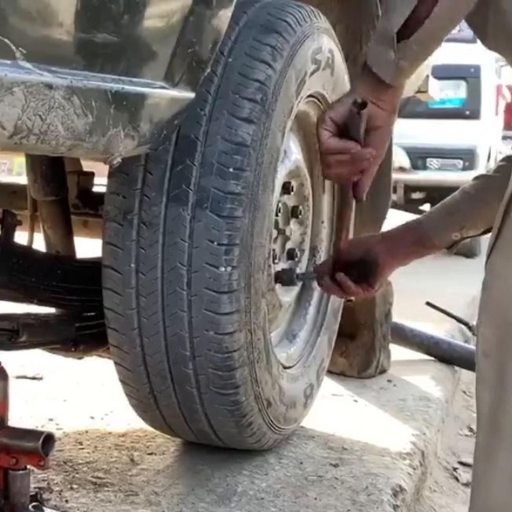
Driving with a bad wheel bearing is not a good idea and must be fixed as soon as possible. Although it is conceivable to cover a small distance, it is not advisable to keep pushing on a damaged wheel bearing as the consequences can be disastrous in terms of your safety as well as the vehicle. Once the wheel bearing is destroyed, it can also cause more expensive parts, such as the wheel hub, axle, or braking system, to break, which can increase the repair costs significantly. For your own safety, it is a good idea to get it checked and fixed by a professional as soon as possible.
Factors affecting the lifespan of a failing bearing
the life span of a bearing that is on its way to failure can vary quite drastically. Firstly, the extent of wear on the bearing tends to have an effect – a less worn bearing may last a while longer, whereas a severely worn bearing may fail almost instantly. Life span is also affected by the kind of driving: bad roads, carrying heavy loads, or high driving speeds can speed up the failure. Moreover, the quality of the bearing is also very important. For example, poor-quality bearings or incorrectly placed bearings may seem functional, but over time, they break down rapidly. Getting regular inspections and replacing bearings as soon as the unusual sounds and vibrations start appearing helps prevent further damage and ensures that the bearing lives for as long as it can.
Short-term driving recommendations
When I have to recommend short-term driving strategies, I always suggest paying attention to the following remarked items to protect your safety while minimizing further unnecessary damage to your bearings:
- Reduce Vehicle Speed – If you are driving aggressively, try to pull back a little as it would cut back the wear on your bearings especially in cases where you’ve been hearing loud vibrations or noise. The friction and heat produced at high speeds wear components at a much faster rate.
- Avoid Excessive Weight – If you can, try to limit the weight of the loads you’re lifting and carrying. Heavy weights put too much stress on the bearings and these increase the likelihood of earlier failures. During this transition phase, please stick to moderate or light loads.
- Stick to Smooth Roads – Avoid poorly constructed roads that have potholes and uneven surfaces. The combination of all those can generate shock to the bearing, which would worsen its condition.
- Brake Gently -Sudden harsh action on the brakes generates transferring loads and vibrations to the bearings. In cases where the bearings are unused for too long, brakes gently can be an easy yet effective way to ensure their protection.
- Monitor for Symptoms – Always look out for signs like strange noises, vibration, and scraping while turning, along with abnormal tire wear, because these could be signs of worn-out bearings. Keep track of that condition to avoid the mishap of complete bearing failure,e which would be dire.
By keeping these parameters in mind during short-term driving, you can reduce the likelihood of further damage while planning repairs or replacement. It’s all about driving carefully and minimizing additional strain on the affected components.
When to stop driving immediately
When you reach the limit of your automobile, it is critical for the safety of both the vehicle and yourself. If your car displays any of the following symptoms, it is preferable to refrain from driving and contact a mechanic for help:
- Loud Grinding or Screeching Sounds
If there are extreme grinding or screeching or roaring noises emitting from the bearings and the wheels, it is easy to gauge that they are damaged badly, this bears testimony to the fact that the metal parts are worn out to an extent where they rub against each other enhancing the chances of wheel disassembly and the components around them being damaged.
- Wheel Wobbling or Vibration
You might want to look out for the steering being wobbly or having extreme vibrations at a higher speed; this also might suggest that the bearings need replacement. At this point in time, you stand the chance of getting compromised by the control of your vehicle, which would make it dangerous for you to drive.
- Excessive Heat Around the Wheels
You might have witnessed that a worn-out bearing ends up generating a lot of heat within closer proximity to the tire, and that is because of the friction it causes. And if anything is out of place, like a burning odor around the wheel or a hub that’s too hot, then it calls for an immediate cessation of driving.
- Tire Separation or Wobbling Wheels
Should the stability of the wheel come into question, or does it appear as if the wheels are about to dislocate? Look to avoid moving the vehicle. This could cause the wheel to completely disassemble making it very dangerous.
- Sudden Loss of Steering Precision
If, for some reason, your auto begins drifting in one direction or your steering is rather erratic, then it could be related to the wheel bearing. Because of this lack of control, the chances of an accident are greatly increased, and it also means that it is important to stop as soon as possible.
When first noticing such signs, the immediate step to take is to stop the vehicle, as this ensures your safety and that of others on the road while also minimizing damage to the vehicle’s parts. Always prioritize professional assessments and repairs if safety is your concern.
What happens if you continue to drive with a bad wheel bearing?
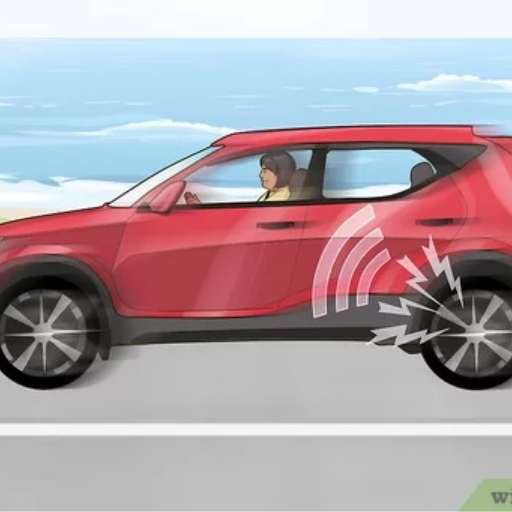
It goes without saying that ending up with a defective wheel bearing while driving can lead to devastating consequences. If you think driving with a faulty wheel bearing is simply annoying or uncomfortable, then you are wrong, as a wheel bearing that has seen better days affects the integrity and functionality of your vehicle. Due to excessive and prolonged friction and heat, the bearing can become overly dunged and seize up, which can cause a wheel to come off. This, of course, is a safety risk not only to you but to everyone else on the road. And on top of that, this…Driving like that doesn’t just affect the bearing- it can also destroy other parts, such as the hub, axle, and break, you name it, at very pricey setup charges. Trust me, if you fix it now, it will be far less expensive and far less time-consuming than later when there is a complete failure.
Progressive damage to other components
In case you’re not aware, your wheel assembly has a wheel bearing that, when worn out, can cause some stress and vibrations. Failure to fix it can lead to premature failure in the braking system, hub wear, and axle deformation. It is essential to fix a faulty wheel bearing quickly to make sure the reliability and safety of your vehicle aren’t compromised.
Increased risk of wheel seizure or detachment
The increased danger of a wheel getting seized or getting detached is in a class of its own. Let me explain. When the wheel bearing is damaged, there’s a risk of the wheel seizing during spin, which will leave the driver devoid of any control and potentially lead to disastrous scenarios. Indeed, the option of ignoring it will one day lead to an even worse scenario: the complete removal of the wheel. For the longest time I have worked in the industry,y and the most vile thing that has come out from my experience is the rate at which an innate issue escalates into a threat to life. Thus, broken or malfunctioning wheel bearings should not be recommended for repair; replacing these is simply being humble for the safety of people in general.
Impact on vehicle control and safety
There are a number of key points that need to be taken into account concerning the effects of a malfunctioning wheel bearing on vehicle control and safety. Let’s go through it in detail to understand why this is such an important concern:
- Steering Response – This can result in steering issues, especially if the wheel bearing is damaged. You might notice that the steering feels loose and unresponsive, making it difficult to control the vehicle, especially while turning it or when making sharp moves. As a result, the vehicle is more likely to be out of control during emergency situations.
- Vibration and Noise – Wheel bearings can also fail while grinding, humming, or rumbling louder during accelerations. These deteriorations lead to vibrations, which tend to disturb the vehicle during driving, making the ride uncomfortable and taking the driver’s focus away from the road.
- Wheel Mobility – A deteriorated wheel bearing makes the dismissal of the wheels challenging, meaning the vehicle will move in any direction. If rotation isn’t smooth, this means a vehicle will bear more friction, meaning from one random side, the car would be pulling in one direction whether it is at high speeds or on slippery surfaces.
- Brake Performance – There is a connection between the wheel bearing and the braking system, meaning the wheel bearing has to work efficiently and reliably or else this could affect the whole braking system. This could make one’s vehicle brake at different times, or braking would be uneven, which would lead to great stopping distances and may cause accidents, especially if stopping abruptly.
- Risk of Complete Wheel Failure – – If the problem is ignored for a long enough period of time, the wheel runs the risk of suffering a catastrophic failure and entirely locking or detaching. This kind of failure leads to total vehicle control loss, which puts the driver in danger not only himself and his passengers but also other users of the road.
In answering the above parameters, it is evident that a broken wheel bearing goes beyond being a mere technical composition – it is a major safety risk, too. In case of any signs of a failing wheel bearing, like weird noises, unusual vibrations, or trouble with steering, one should get it checked and repaired without delay to ensure safe driving conditions.
How urgent is it to replace a bad wheel bearing?
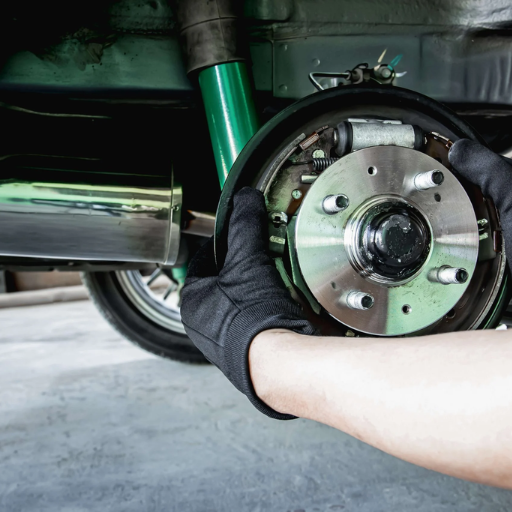
Here is the most immediate explanation for why addressing a defective wheel bearing is critical: it’s essential to recognize the fact that both the functionality of your car and your safety while on the road can be compromised. To justify the importance of servicing a wheel bearing, let me break it down into several parameters: It cannot be appreciated by those who haven’t toiled in the automotive business, but from my experience in the automotive sector, this pressing concern has some bearing on performance and safety and is worth looking into.
- Safety Risks -A bearing that is not in good condition can lead to loss of control of a vehicle or the wheel completely coming off the vehicle. There are a lot of risks involved for pedestrians and other drivers, so try to attend to this issue before it escalates.
- Vehicle Stability – A vehicle with bad bearings bears an imbalance that worsens the driver’s ability to steer or properly control the vehicle at an abrupt stop or when a turn is made. These factors greatly influence and encourage an accident to happen.
- Preventing Further Damage – A bearing does not have to solely impact other parts of the vehicle as a bearing that is not functioning correctly also impacts the hub, axle, and suspension, and the change in these parts can escalate as well if not attended as soon as possible.
- Noise and Vibrations – Over time, those annoying grating, rumbling, or banging sounds are not going to get any quieter. Having said that those sounds can allow a user to pinpoint a certain problem in the device and also reduce the amount of money they have to spend trying to fix it in the future.
- Legal and Insurance Implications – When a bearing in a vehicle goes bad and makes the vehicle fail, it can be the reason for an accident, and when this situation arises, the person who owns the vehicle can be sued if it can be proven that he was ignoring the issue.
In short, the emphasis placed on promptly replacing a worn-out or damaged wheel bearing is essential as it ensures safety, protects the car, and saves one from unnecessary costs. So, if you’re observing conditions such as voicing, vibrating, or any issues with steering, then please do not procrastinate in any manner. Seek assistance from your mechanic as soon as possible. However, do keep in mind that when the requirement is a wheel bearing, the sooner, the better.
Assessing the severity of the problem
you should never take the extent of a bad wheel bearing as a trivial matter. I have witnessed instances where car owners disregarded the repairs only to experience dangerous breakdowns on the road, which were easily avoidable. The aforementioned – such as strange sounds or movement that is not particularly firm – are indications that your car is in trouble. A loose wheel bearing problem can be easy to fix, but when neglected, it makes sustained accumulation of damage within the rest of the components more likely and, more importantly, increases the chance of accidents. I suggest? Forget it, and don’t wait. Take your car to a certified specialist at the very moment you see these warning signs. It is always better to solve an issue now than deal with bigger issues later.
Timeframe for scheduling repairs
In an ideal scenario, you should book repairs at the first sign of a bad wheel bearing. Early indicators such as humming noises and vibrations should be addressed as neglecting them will worsen the problem, causing more damage. For safety and to prolong the life of the components, it is generally advisable to have your vehicle checked and repaired within a week of noticing such early symptoms. Taking quick action will save you time, money, and risks while on the road.
Consequences of delaying replacement
Causing delays in the replacement of your wheel bearing can result in a domino effect as it can put your safety and even the performance of your vehicle in danger. Here’s a detailed assessment of neglecting the critical repair:
- Increase in Noise Levels:
As the bearing deteriorates, a faulty bearing will begin to emit strong humming noises that escalate into grinding and so on. This sound interference can obstruct your focus on driving and is something that you need to pay attention to and not disregard.
- Tire Wear and Damage:
An off-center wheel can result in improper load distribution on all four tires, which in turn affects differentials and leads to tire wear or even burst tires. This will incur additional costs, so you will have to buy a new set of tires much sooner than you expected.
- Reduced Steering and Handling:
A bearing that is showing signs of wear can greatly affect the steering and handling components of your car. This may manifest as vibrations in the steering wheel, loss of control within the vehicle, and or delayed steering response time, most prominently when making a turn; this kind of instability is absolutely unsafe.
- Potential Wheel Detachment:
Ignoring a wholly failed wheel bearing could cause a wheel to get separated from your automobile. Such catastrophic failure would result in serious accidents, putting you and the rest of the people driving on the road at risk.
- Damage to Surrounding Components:
A damaged wheel bearing is not a stand alone issue, it will put a strain on other equipment like the hub, axle, or other connected equipment such as a suspension system. Meaning if said damage is not repaired soon, it will become a very time consuming and expensive set of repairs.
- Higher Repair Costs:
Due to the issue being addressed at an early stage, a quick wheel bearing exchange is sufficient. Leaving it turned out to be too long, resulting in a generally easy wheel bearing repair and becoming a costly ordeal as it needed restoring several components.
- Compromised Driving Safety:
Arguably, the biggest reality is that there may be a total failure or an accident. A damaged wheel bearing has a direct impact on the stability of your vehicle; this greatly risks both your safety and the safety of any passengers on board and other people on the road.
Conversely, considering those factors makes it fairly evident that a wheel bearing which is on the verge of failing should be tackled in a timely manner, it is replacing axes so that lives can be protected, money can be saved and the further breakdown of machinery can be averted. Always make it a point to do so at the very start so as to keep your calm when steering.
What’s the cost to replace a wheel bearing?
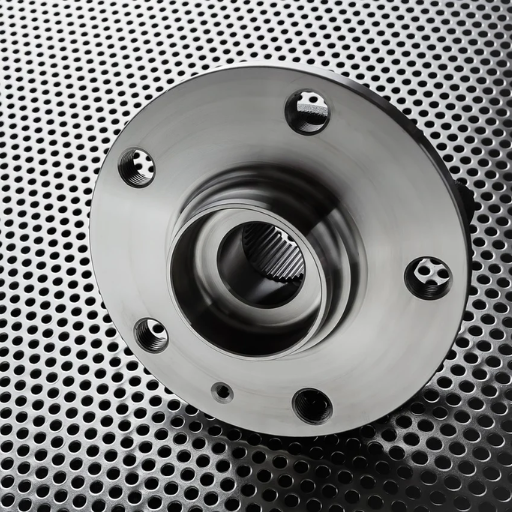
the average price for replacing a wheel bearing will cost between $150 to $800 per wheel. This variation depends on the make and model of your vehicle, the cost of the parts, and the labor involved. For many vehicles, the bearing alone might cost between $50 and $200, with the remaining part being labor, especially for complex jobs. In order to avoid paying much more than necessary, one must fix the problem as soon as possible, which means taking measures early enough will prevent the costs from rising further and other fixes from being needed due to the damage.
Factors affecting replacement costs
The following factors affect the price of wheel bearing replacement individually and in combination. Starting off with the car’s manufacturer and design, it greatly affects the price as parts of rare and luxury cars have to be ordered out, and those are pricey. Furthermore, location matters since cities tend to have higher labor rates. In addition, all types of wheel bearings include different types of assemblies, such as press-in and bolt-on, which also increase their respective amounts. Last but not least, the axle, for example, and the hub’s components may be damaged, which would mean an additional charge.
Long-term savings of timely repairs
Getting problems with your wheel bearing fixed at the very outset is the smart way to save time and money later. From my own personal view, I think that addressing it at the early signs helps to prevent many other parts, such as a hub, axle, or suspension, from being damaged. These additional costs are not only more but also cause your vehicle to be out of commission for longer. Fuel economy is likely to be better because a bearing that is too strong creates wheel resistance, making the vehicle work too much. Not to mention, driving with bad bearings can definitely be a safety risk and definitely not something I would want to gamble with. The earlier you act, the more smooth performance you get and the better reliability you will be able to enjoy throughout the lifespan of your vehicle, which is always smart.
Reference
- SKF Vehicle Aftermarket Blog – Discusses the dangers of driving with a bad wheel bearing.
- Ultimate Subaru Forum – Provides insights on the potential damage caused by driving with bad wheel bearings.
- Mechanics Stack Exchange – Explores the risks associated with driving on different roads with a failing wheel bearing.
Frequently Asked Questions (FAQs)
Q: How do I know if my wheel bearing is bad?
A: Common signs of a failing wheel bearing include unusual noises like grinding, humming, or rumbling coming from one wheel, vibrations in the steering wheel, and the car pulling to one side. You may also notice uneven tire wear or a feeling of looseness in the wheel.
Q: Is it dangerous to drive with a bad wheel bearing?
A: Yes, it can be dangerous to drive with a bad wheel bearing. As the bearing deteriorates, it can cause the wheel to wobble, potentially leading to loss of control. In extreme cases, the wheel can seize or even come off, making it very hazardous to drive.
Q: How long can I drive with a wheel bearing that’s making noise?
A: While it’s not recommended to drive with a noisy wheel bearing, you might be able to drive for a short distance (around 1000 miles) if the bearing is just starting to fail. However, it’s crucial to have it checked and replaced as soon as possible to avoid potential safety risks.
Q: Can a wheel bearing fail suddenly?
A: Yes, a wheel bearing can fail suddenly, especially if it’s been neglected for a long time. However, most wheel bearings will show signs of wear before they completely fail, giving you some warning to get them replaced.
Q: Do I need to replace all wheel bearings if only one is bad?
A: You don’t need to replace all wheel bearings if only one is bad. Wheel bearings typically wear at different rates, so it’s common to replace them individually as needed. However, if your vehicle is high mileage, it might be worth considering replacing them in pairs (front or rear) for balanced performance.
Q: How long does a wheel bearing typically last?
A: On average, wheel bearings can last anywhere from 85,000 to 100,000 miles. However, this can vary greatly depending on the quality of the bearing, driving conditions, and the make and model of your car. Some may last as long as 200,000 miles with proper maintenance.
Q: Can I still drive long distances with a failing wheel bearing?
A: It’s not advisable to drive long distances with a failing wheel bearing. While you might be able to drive for short distances (like 10 miles) to get to a repair shop, long trips increase the risk of complete bearing failure, which can be extremely dangerous.
Q: Is it possible to repair a bad wheel bearing instead of replacing it?
A: In some cases, a simple bearing re-grease and service might be possible if caught early. However, most modern wheel bearings are sealed units that require complete replacement when they fail. It’s best to consult with a mechanic to determine the appropriate course of action.
Q: How much does it cost to replace a wheel bearing?
A: The cost of replacing a wheel bearing can vary widely depending on the make and model of your car, as well as labor rates in your area. On average, you can expect to pay between $200 to $800 per wheel for parts and labor. Some luxury or performance vehicles may cost more.
Q: Can a bad wheel bearing cause the car to pull to one side?
A: Yes, a bad wheel bearing can cause the car to pull to one side. As the bearing wears, it can create play in the wheel, affecting the vehicle’s alignment. This can result in the car pulling towards the side with the bad bearing, especially during braking or acceleration.
